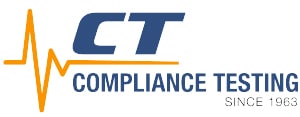Get Free Help From Our Engineers With CE Compliance for Electronics
Need help getting the CE mark for your electronic device? We work with businesses and individuals across the country, including in Illinois, to achieve compliance with CE conformity requirements and get the CE mark for your device.
Click the “Talk to Our Team” button or call us on 866-540-5287 to ask our engineers your question about CE compliance for electronics, or request a free quote for testing and achieving the CE mark for your device.

If you want to sell your electronic device in the European Union or European Economic Area, it will need to meet the EU’s standards for electronics in order to receive the CE mark and market access.
The CE mark indicates that a device meets the EU’s safety, health and environmental protection standards. Similar to the FCC mark in the United States, it’s mandatory if you want to bring your device to market in the EU.
Getting the CE mark for your device involves understanding the CE standards for electronics — a range of directives that apply to devices — then testing your device to make sure it meets the standards. We offer this as part of our CE testing and compliance services.
Below, you can find more information about the CE standards for electronics, including specific EU directives that apply to electronic devices and the process for testing your electronic device and achieving compliance.
EU Directives for Electronics
The European Union has established a comprehensive framework of directives and standards for electronic devices to make sure they’re safe, compatible with other devices, and compliant with EU environmental regulations.
Electromagnetic Compatibility (EMC) Directive
The Electromagnetic Compatibility (EMC) Directive ensures electronic devices sold within the EU do not emit, or are not affected by, electromagnetic interference.
Electromagnetic interference, or EMI, can cause devices to malfunction, disrupt radio signals, and affect readings from electrical equipment. This can cause significant issues in both home and commercial settings, as many environments contain multiple electronic devices.
Compliance with the EMC Directive means that your device can operate without interference, either through its emissions or due to exposure to electromagnetic disturbances from another device.
Low Voltage Directive (LVD)
The Low Voltage Directive (LVD) is designed to ensure electrical safety. It covers all electronic equipment used within certain voltage limits, and primarily aims to prevent electric shocks and other risks that may affect users or property.
Currently, the Low Voltage Directive applies to consumer devices with a voltage of between 50 and 1,000 V for alternating current (AC) and 75 and 1,500 V for direct current (DC). Electronic devices below this voltage range are subject to the General Product Safety Regulation.
Compliance with the Low Voltage Directive is essential if your electronic device operates within these voltage ranges.
Radio Equipment Directive (RED)
The Radio Equipment Directive (RED) applies to electronic devices and equipment that make use of the radio spectrum. This includes smartphones and other mobile devices, Wi-Fi routers and other networking equipment, Bluetooth devices, IoT devices and radio equipment.
This directive ensures that devices that use the radio spectrum are safe to use, do not cause interference, and make efficient use of the radio spectrum. Compliance involves carrying out testing for your device to verify it meets the standards set under the directive.
Restriction of Hazardous Substances (RoHS) Directive
The Restriction of Hazardous Substances (RoHS) Directive limits the use of certain materials found in electrical devices, including lead, mercury and cadmium.
These materials are harmful to human health and the environment. The RoHS directive sets limits for these substances to ensure electronic devices are safe for consumers and have a limited impact on the environment.
How to Get a CE Mark for Your Device
Obtaining a CE Mark for your electronic device involves several steps. The process will differ based on the specific standards and directives that apply to your device. Because of this, we suggest contacting our team online or calling us at 866-540-5287 for help with compliance.
Here’s a simplified version of the CE mark compliance process:
- Identify the applicable directives. The first step in achieving CE compliance is working out which directives apply to your device. Your electronic device may be subject to more than one directive, depending on its type, design and purpose.
- Test your device for compliance. This step involves working with an accredited testing lab to verify that your device meets the standards for the CE mark. We specialize in CE testing and can help you complete compliance testing for your electronic device.
- Compile technical documentation. After competing lab testing, you’ll need to compile all technical documentation for your device showing that it meets the relevant standards and complies with EU directives.
- Prepare a Declaration of Conformity. After compiling technical documentation, you’ll need to prepare a Declaration of Conformity (DoC) for your device — a legal document stating that your device meets all of the relevant EU requirements.
- Add the CE mark to your device. After signing the DoC, you can add the CE mark to your device, its packaging and accompanying documentation. Your device may legally enter the European Economic Area as a compliant product.
Contact Us to Discuss CE Testing & Compliance
Achieving compliance with CE standards for electronic products is a key step in bringing your device to market in Europe. As an accredited electrical testing lab, we can help you with each step of this process, from testing your device to preparing technical documentation.
To request a quote for CE testing and compliance, or to ask our engineers about the process, contact us online or call us at 866-540-5287.
Request a Free Quote From Our Team
Please enter your name, contact information, and any information about your device and the type of testing you need into the form below. Our team of engineers and compliance specialists will contact you as soon as possible with a free quote for your project.




